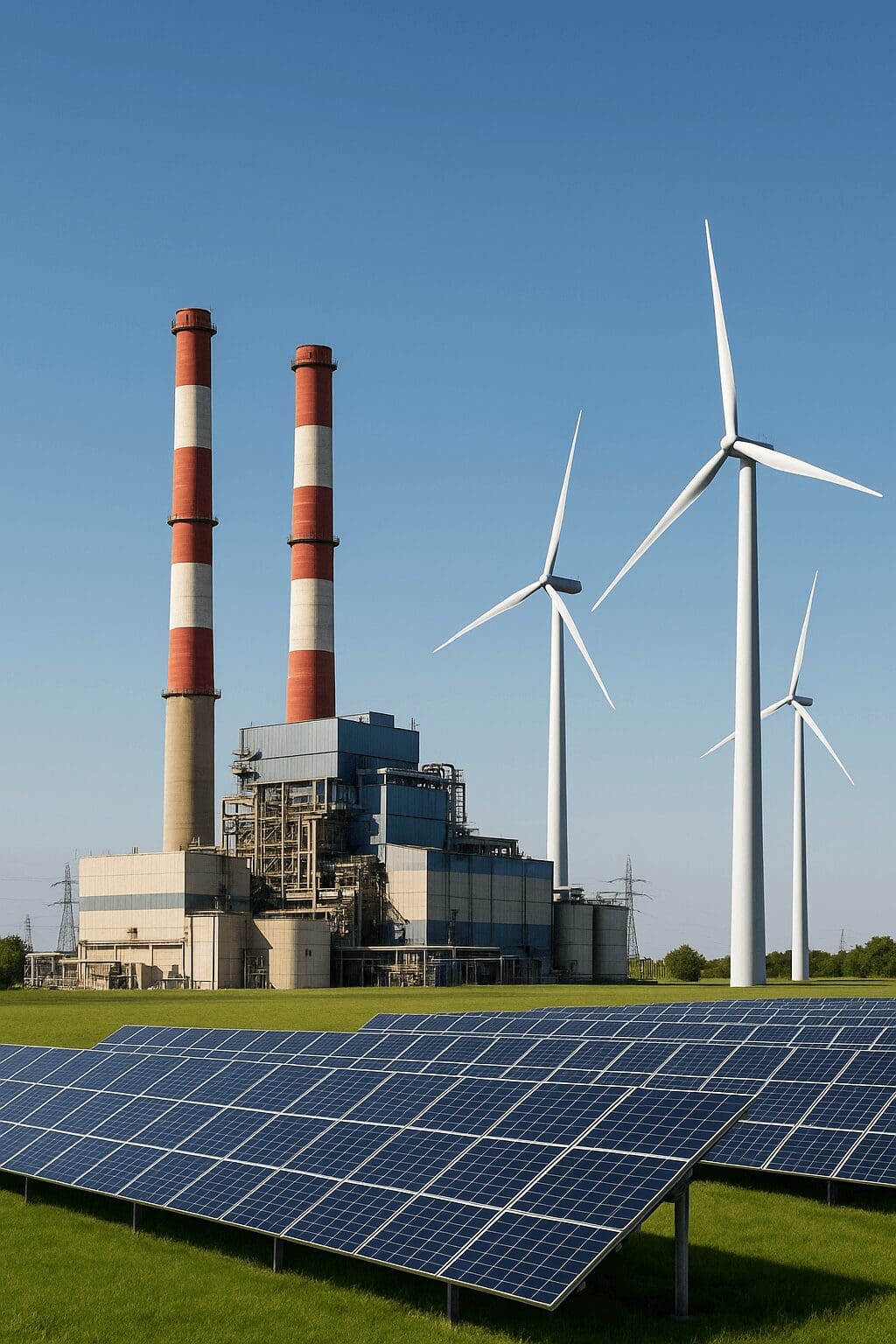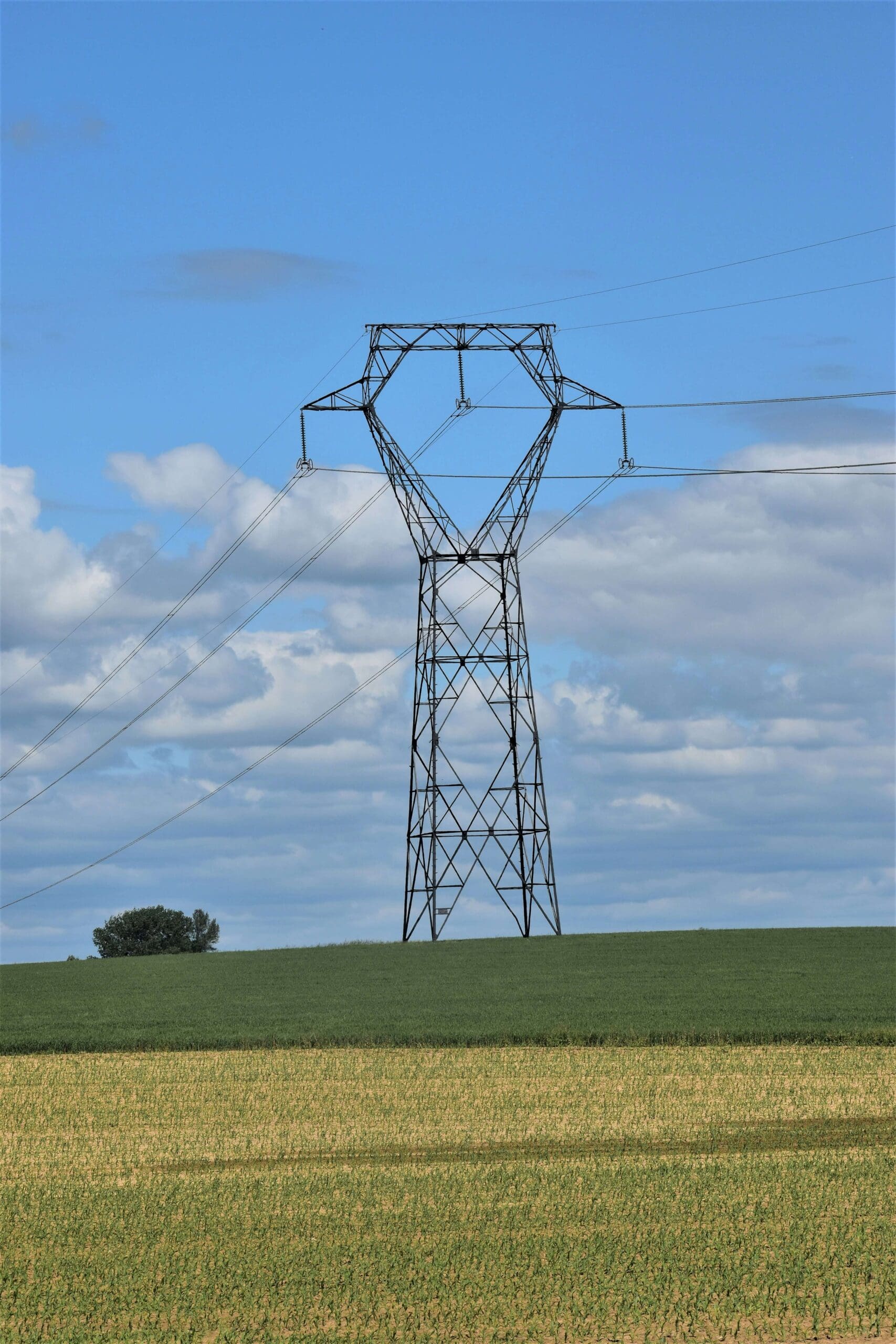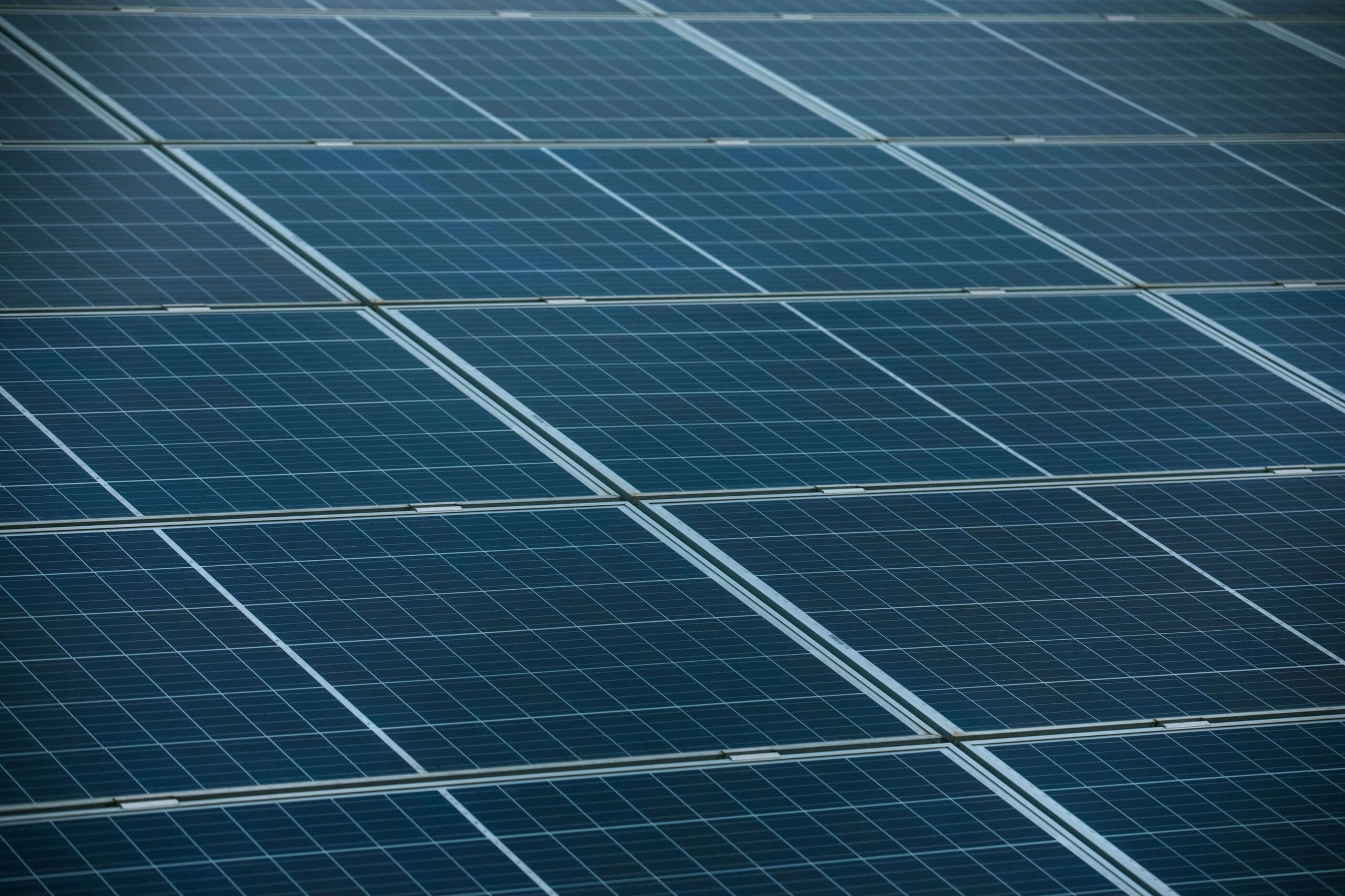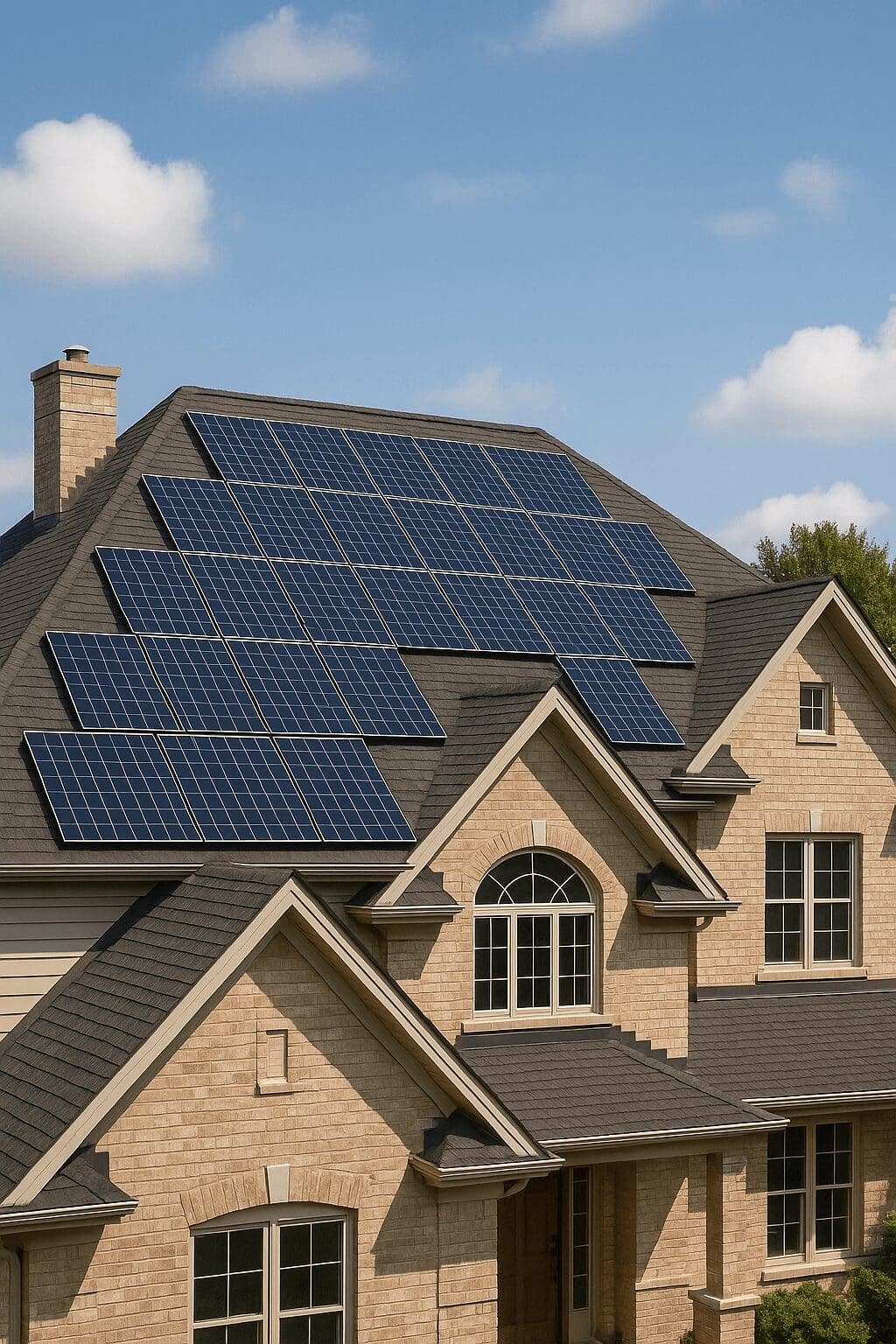Global energy demand is entering a new era. The rise of artificial intelligence and data centers is driving electricity consumption at a pace unseen in decades, while the electrification of transportation, heating, and heavy industry is pushing load growth into entirely new sectors. The need to keep pace with this growing energy demand is creating unprecedented urgency for investment in power generation and grid infrastructure.
Renewables are surging to meet this challenge. Solar and wind are now among the lowest-cost sources of electricity in many markets, and battery storage is maturing rapidly. Yet the reality remains that conventional generation like natural gas, hydro, and nuclear still underpins system reliability and scale. These assets provide the baseload, flexibility, and inertia that keep grids stable, particularly in regions where renewable penetration is still climbing or transmission systems are constrained.
Faced with this landscape, many organizations frame their strategy as a binary choice: conventional versus renewable. Should they double down on clean energy? Extend the life of conventional plants? Shift entirely to new technologies? This either/or mindset can be limiting. In truth, the most resilient path forward is one of integration that leverages both renewable innovation and conventional reliability to create balanced, future-proof portfolios.
This is where energy consultants play a vital role. Advisors who understand both domains are uniquely positioned to help clients navigate complexity, balance competing priorities, and design roadmaps that are both pragmatic and forward-looking. Rather than pushing a single solution, they can evaluate trade-offs, align stakeholders, and deliver strategies that work in today’s realities while preparing for tomorrow’s transition.
The energy future is not about choosing sides. It’s about building systems that are reliable, sustainable, and adaptable, which requires consultants who can bridge the gap between conventional and renewable expertise.
The Realities of Today’s Energy Landscape
Despite the rapid rise of renewables, the global power system continues to be anchored by conventional sources. Natural gas, coal, hydro, and nuclear still supply the majority of electricity worldwide, providing the baseload and dispatchable capacity that keeps lights on around the clock. These resources offer the scale and predictability that wind, solar, and batteries, while growing, cannot yet fully replace on their own.
Renewables have made extraordinary progress. Utility-scale solar and onshore wind are now competitive with or cheaper than new fossil generation in many markets, and storage solutions are beginning to extend their reach. Yet intermittency (the sun doesn’t always shine and the wind doesn’t always blow) remains a fundamental challenge. Intermittency means that renewables must either be paired with storage, backed by conventional plants, or supported by significant transmission buildout to balance variability across regions.
Demand Drivers Reshaping the Mix
The demand side of the equation is also transforming at unprecedented speed. Artificial intelligence and the explosive growth of data centers are creating electricity loads that are both enormous and continuous. Unlike residential demand, which ebbs and flows, these facilities require constant, high-quality power supply.
Electrification is another powerful driver. Electric vehicles, heat pumps, and electrified industrial processes are shifting demand from fossil fuels into the power sector, increasing overall consumption and changing daily load curves. At the same time, heavy industries such as steel, cement, and chemicals are under mounting pressure to decarbonize. This is leading to demand for clean electricity and green hydrogen, which will further strain generation and grid capacity.
Grid Constraints and Legacy Systems
Even as power generation evolves, much of the world’s transmission and distribution infrastructure reflects an earlier era. Grids were originally designed for centralized large power generation plants that feed electricity outward through predictable pathways. Today’s distributed renewables, from solar parks to behind-the-meter generation, require far more flexibility and advanced system management.
Transmission bottlenecks are already a critical barrier in many markets. Interconnection queues stretch for years, while congestion limits the ability to move renewable energy from where it’s produced to where it’s needed. Distribution systems are also being tested by new ‘prosumers’ that drive two-way flows of electricity, requiring smart-grid investments and advanced controls to manage.
How “Renewables-Only” Consulting Falls Short
The growth of wind, solar, and storage has transformed the energy sector and rightly captured attention. But for organizations seeking to meet today’s demands while preparing for tomorrow, a consulting approach focused solely on renewables often misses the bigger picture.
Overlooking Reliability Needs
Renewables are variable by nature. Solar output disappears at night and dips during cloudy days, while wind patterns are seasonal and unpredictable over the span of a single day. Without adequate backup capacity, these fluctuations can jeopardize grid stability. Firming resources, whether through dispatchable natural gas, hydro, or nuclear, remain essential to ensure continuous supply. A “renewables-only” lens risks ignoring the operational realities of maintaining system balance, particularly as demand from data centers, electrified transport, and industry grows around the clock.
Ignoring Existing Assets
Most organizations already own or depend on conventional assets. These facilities, whether aging coal plants, combined-cycle gas turbines, or legacy hydro stations, represent billions in sunk capital. Consulting that disregards these resources can push clients toward premature retirement rather than strategic optimization. In many cases, extending asset life, improving efficiency, or pairing conventional generation with new renewable capacity delivers greater value than a wholesale shift. Clients need strategies that respect both financial realities and long-term energy transition goals, not blanket recommendations to replace one system with another.
Missing the Investor and Regulatory Reality
Investors, regulators, and offtakers all demand reliability as well as sustainability. Financing partners evaluate projects not only on carbon metrics but also on their ability to deliver consistent returns backed by firm capacity. Regulators, too, often require reserve margins and capacity guarantees that renewables alone cannot always provide. Policy incentives may accelerate renewable deployment, but they do not eliminate the market fundamentals of reliability, risk, and return. Consultants who discount conventional energy considerations risk leaving clients with strategies that look good on paper but falter under scrutiny.
The Value of a Blended Approach
For organizations navigating today’s energy transition, the real opportunity lies in blending conventional and renewable strategies. Consultants who bring expertise in both domains can deliver integrated, pragmatic solutions that balance financial performance, operational reliability, and long-term sustainability. This dual perspective unlocks value across four critical areas.
Holistic Portfolio Planning
Energy strategy is no longer about simply adding capacity; it’s about balancing multiple priorities simultaneously. Capital expenditures, operating costs, emissions targets, and reliability requirements all interact. A dual-expertise consultant can model scenarios that consider not just renewable growth, but also the managed ramp-down of conventional generation.
For example, instead of recommending the abrupt retirement of gas assets, a more nuanced approach might involve staged replacement that pairs new solar and storage with gradually reduced gas capacity. This allows clients to capture cost savings and emissions reductions without compromising grid stability. By planning holistically, organizations can transition toward renewables while making the most of existing investments.
Optimizing Grid Integration
Grid integration is often where projects succeed or stall. Transmission and distribution systems must be upgraded to handle intermittent, distributed generation. Consultants with dual expertise understand that storage and conventional peaker plants are not competitors to renewables but enablers.
Battery systems can smooth out short-term fluctuations, while gas or hydro peakers provide insurance for longer-duration gaps. Similarly, conventional plants strategically positioned on the grid can support renewable growth by providing voltage stability and backup capacity. Consultants who can weave these elements into a single system plan help clients avoid costly delays, interconnection challenges, and the risk of stranded assets.
Risk Mitigation Through Diversification
Every energy technology carries its own risks. Renewables face intermittency and weather variability, while conventional fuels are exposed to price volatility and, in some cases, carbon regulation. Extreme weather events, such as polar vortexes or heatwaves, can strain any single resource.
A diversified portfolio that combines renewables, storage, and conventional generation provides resilience against these risks. Consultants who understand both sides of the market can design strategies where one asset class offsets the vulnerabilities of another. This integrated approach is especially valuable for industries and large consumers that cannot afford downtime, such as data centers or manufacturing facilities.
Building Investor and Stakeholder Confidence
Finally, dual expertise builds credibility. Investors are increasingly scrutinizing projects for both sustainability and financial soundness. A consultant who can clearly articulate trade-offs, such as lower emissions versus higher reserve requirements, helps clients secure financing with confidence.
Similarly, regulators and offtakers respond to plans that balance ambition with realism. By presenting strategies that acknowledge the importance of both renewable growth and conventional reliability, consultants demonstrate transparency and foresight. This, in turn, reassures boards, communities, and end users that the path forward is both responsible and achievable.
Client Applications: Where the Blended Approach Adds Value
The benefits of combining conventional and renewable expertise become most evident when viewed through the lens of different client groups. Each faces unique pressures, but all share a need for strategies that are both forward-looking and grounded in operational realities.
Utilities
Utilities sit at the center of the energy transition, balancing public policy goals with system stability. Many are expanding their renewable portfolios by adding wind, solar, and storage, while still operating conventional fleets that provide essential baseload and grid services. A dual-expertise consultant helps utilities optimize this balance, ensuring conventional plants are phased down responsibly, renewable projects are integrated smoothly, and regulatory requirements for reliability are consistently met.
Independent Power Producers (IPPs) and Energy Infrastructure Developers
For IPPs and energy infrastructure developers, the challenge is often navigating interconnection queues and building projects that make financial sense in evolving markets. Hybrid developments that pair solar or wind with storage and, in some cases, gas peakers, are becoming increasingly common. Consultants with a blended perspective can guide developers through structuring these projects, demonstrating to investors and offtakers how different technologies complement one another. By presenting strategies that leverage both conventional reliability and renewable cost competitiveness, IPPs can shorten development timelines and strengthen their case for financing.
Large Energy Consumers (e.g., Data Centers, Industrial Users)
Large consumers face some of the highest stakes. Data centers, manufacturers, and other industrial users require stable, high-quality, and in some cases continuous power when outages are simply not an option. At the same time, many are under pressure from shareholders and customers to demonstrate sustainability leadership. Blended procurement strategies are emerging as the solution: long-term power purchase agreements (PPAs) for renewable supply, combined with firm contracts from conventional providers to ensure reliability. Consultants who understand both sides can help clients craft tailored procurement mixes that safeguard operations while advancing decarbonization commitments.
Governments and Regulators
Policy makers must balance ambition with pragmatism. Aggressive renewable targets are important, but so is ensuring reliability, affordability, and public trust. Governments and regulators benefit from consultants who can design pathways that reflect transition, but not disruption, showing how conventional and renewable resources can coexist during the shift. By crafting policies that recognize the need for both, decision-makers can accelerate decarbonization while maintaining energy security and stability.
Technology & Market Innovations Enabling Integration
The blending of conventional and renewable energy is increasingly enabled by technology and market innovation. These advances allow organizations to optimize portfolios, manage risk, and ensure reliable supply while transitioning to lower-carbon solutions.
Hybrid Project Structures
Hybrid projects, where renewable and conventional assets are co-located or strategically paired, are becoming a common approach. By combining solar parks or wind farms with existing gas or hydro plants, developers can smooth generation profiles and improve overall reliability. Grid-smoothing strategies, such as dispatch coordination and ramp-rate management, further enhance system stability. These integrated configurations maximize the value of both asset types, allowing renewables to contribute more effectively without compromising the performance of the conventional grid.
Storage as a Bridge
Energy storage technologies such as batteries and pumped hydro play a critical role in bridging the gap between intermittent renewables and firm dispatchable conventional resources. Storage absorbs excess generation during periods of high renewable output and releases it during demand peaks or low-generation periods. This reduces reliance on conventional peakers, cuts operating costs, and mitigates emissions. However, scaling storage comes with challenges, including high capital costs, site limitations, and lifecycle management. Effective integration requires careful planning and ongoing optimization to ensure that storage investments deliver both reliability and economic value.
Digital & Modeling Tools
Advances in digital tools are transforming how energy systems are designed and operated. Scenario planning, digital twins, and advanced grid simulation allow consultants to model multiple generation and storage scenarios, assessing trade-offs across both conventional and renewable assets. Data-driven insights inform decisions about capacity expansion, dispatch scheduling, and contingency planning, giving clients a clear view of risks, costs, and performance outcomes. By leveraging these tools, consultants can create energy strategies that are not only technically sound but also adaptive to evolving market and policy conditions.
The Consultant’s Role in a Balanced Energy Transition
In today’s rapidly evolving energy landscape, consultants function as translators between technical, financial, and regulatory domains. Clients face a complex web of considerations: balancing intermittent renewables with firm conventional capacity, meeting decarbonization goals, managing costs, and satisfying investor and regulatory requirements. A consultant who understands both conventional and renewable energy is uniquely positioned to bridge these domains, translating technical possibilities into actionable strategies that align with financial and operational realities.
Rather than advocating a single solution, effective consultants help clients navigate complexity, evaluating trade-offs and identifying synergies across energy sources. They ensure that decisions are informed by a full understanding of system reliability, market dynamics, and policy frameworks. This approach prevents organizations from making oversimplified or risky choices, such as prematurely retiring conventional assets or overinvesting in unproven technologies.
Moreover, consultants bring credibility by demonstrating a clear pathway that balances short-term operational reliability with long-term sustainability. They help clients design strategies that meet today’s energy demands while positioning them to adapt to future policy, market, and technological shifts. Whether working with utilities, developers, industrial consumers, or government agencies, consultants who straddle both domains provide clarity, confidence, and pragmatic solutions.
The global energy landscape is evolving at an unprecedented pace. Demand is rising from data centers, electrified transport, and industrial growth, while grids are under pressure to integrate an increasing share of renewable generation. The energy transition is well underway, but it is far from complete. Many organizations still face a false dichotomy: choosing between conventional and renewable energy sources as if one must entirely replace the other. This mindset can be a barrier to progress, delaying practical solutions and leaving systems vulnerable.
In reality, integration, rather than perfection, is the key. For instance, having a gas-fired power plant on standby 80% of the time, while renewable assets generate the majority of electricity, is far more efficient and sustainable than running that same plant 100% of the time. This “good enough” approach allows organizations to reduce emissions, manage costs, and maintain reliability without waiting for an unattainable ideal.
Consultants who bring dual expertise in both conventional and renewable energy offer a clear advantage. They provide resilience, credibility, and actionable roadmaps that consider technical, financial, and regulatory realities. At GreenKey Consulting, we are uniquely positioned to guide clients through this integrated approach. Leveraging the extensive experience of our CEO in both traditional energy asset development and renewables, as well as deep knowledge of grid architecture, we help organizations navigate complex decisions with confidence.
The path forward is not about picking sides; it’s about designing energy portfolios that are reliable, efficient, and adaptable. Organizations that seek advisors capable of bridging conventional and renewable strategies will be better equipped to meet today’s challenges while preparing for tomorrow’s energy future.




